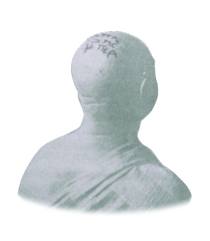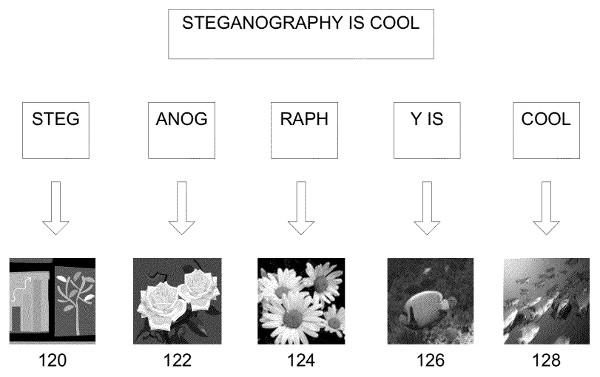In this post (part 1 of 2 – part 2 can now be found here) I would like to introduce the topic of image steganography, which is the practice of concealing secret messages in digital images. I’ve always been fascinated by this subject so I have taken the excuse to research for this post as a way to delve into the topic. Turns out that image steganography is a fascinating field that should be garnering much more attention than it is.
I will divide the post into two sections:
- Steganography: what it is and its early history
- Digital image steganography and some recently reported real-life cases – including one from an FBI report on Russian spying in the US (like something out of the cold war)
In my next post I will detail some simple techniques of hiding messages in images, so stay tuned for that.
What is Steganography
Usually today if we want to send sensitive data (e.g. credit card information), we encrypt this data before sending it across the internet. Sending messages like this, however, can arouse suspicion: there is obviously sensitive/secret data in your encrypted message that you are trying to conceal. Attackers know exactly where to look to try to obtain this information.
But steganography works differently: you hide the message in plain sight in order for your message to not attract any attention at all.
The first recorded case of steganography goes back to 499 BC when the Greek tyrant Histiaeus shaved the head of his slave and “marked” (probably tattooed) a secret message onto it. The message was intended for Aristagoras and it was telling him to start a revolt against the Persians. Histiaeus waited for the slave’s hair to grow back before sending him on his way. When the slave reached Aristagoras, his head was shaved again to reveal the hidden message.

Who would have thought to stop the slave and look for a hidden message tattooed on his head? Ingenious, wasn’t it? (Well, maybe not for the slave who was probably left with that message permanently on his head…).
That’s the way steganography works: through deception.
It is an important topic because of how seemingly common it is becoming. A report from 2017 by the global computer security software company McAfee says that steganography is being used in more ways today than ever before. However, Simon Wiseman, the chief technology officer of the network security firm Deep Secure, argues that it’s not so much that steganography is becoming more popular, just that we are discovering it more often by learning how it is being done: “now that people are waking up to the fact that it’s out there, the discovery rate is going up.”
Either way, as McAfee claims: “Steganography will continue to become more popular.”
Digital Image Steganography
As mentioned earlier, digital image steganography is the hiding of secret messages inside images. Take a look at these two images distributed by the FBI:


You wouldn’t think that both of them contain the following map of an airport, would you?

Well, they do. The FBI doesn’t lie 🙂
It’s a scary thing when you consider the huge number of images being sent across the internet every day. You would really have to know precisely where to scan for this stuff and what to look for otherwise you’re searching for a needle in a haystack.
Now, the first recorded case of image steganography in a cyberattack dates back to 2011. It was called the Duqu malware attack and it worked by encrypting and embedding data into small JPEG image files. These files were then sent to servers to obtain sensitive information (rather than doing destructive work directly like deleting files). McAfee says that it was used to, for example, steal digital certificates from its victims. How Duqu worked exactly, however, remains unknown. Researchers are still trying to work this out (although all sources I could find on this are fairly outdated). Quite amazing.
I found earlier reported cases, however, of image steganography being used for malicious purposes, not necessarily in cyberattacks. My favourite one is from the FBI.
Here’s an official report from them from 2010 accusing the Russian foreign intelligence agency of embedding encrypted text messages inside image files for communications with agents stationed abroad. This reportedly all took place in the 90s in the US. Turns out that the 10 spies mentioned in the report later pleaded guilty to being Russian agents and were used as part of a spy swap between the U.S. and Russian governments. The FBI and the Russians… and spy swapping! Like something out of a movie. Shows you how serious the topic of digital image steganography is.

You can see how this way of embedding communication in images is a much more sophisticated version of the “tattooing a message on a shaved head” example from Ancient Greece described above.
Is image steganography being used like this by ISIS to communicate secretly amongst each other? Chances are it is.
Early this year a communication tool was discovered called MuslimCrypt (poor choice of name, in my opinion). As Wired reports, the tool was found in a private, pro-ISIS Telegram channel on January 20. It is dead simple to use (take a look at the video on the Wired page to see this for yourselves): you select an image, write a message in text form, select a password, and click one button to hide this message inside the image. This image can then be sent across the internet after which the recipient puts it into MuslimCrypt and with one click of a button retrieves the hidden message. Sneaky, dangerous stuff.
What would make detection even more difficult is a hidden message distributed over multiple images. Well, models for this already exist, as the academic paper “Distributed Steganography” (Liao et al., International Conference on Intelligent Information Hiding and Multimedia Signal Processing, 2011) presents.
Moreover, a patent for distributed steganography was filed by a certain Charles Easttom II William in 2010. This image from the patent summarises distributed steganography nicely:

Fascinating stuff, isn’t it?
Stay tuned for my next post where I will look in detail at some simple examples of digital image steganography. (Update: this new post can now be found here)
To be informed when new content like this is posted, subscribe to the mailing list (or subscribe to my YouTube channel!):



